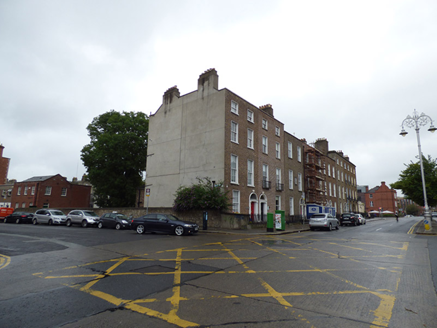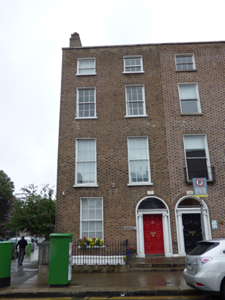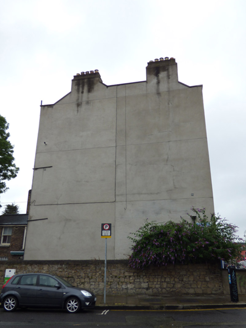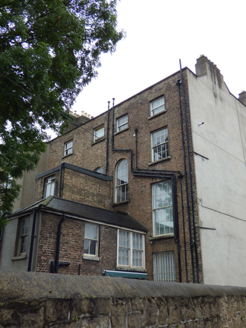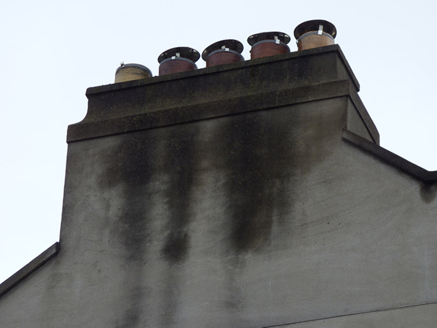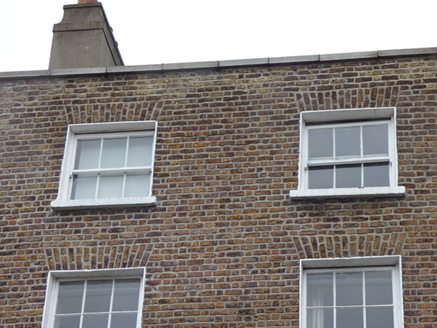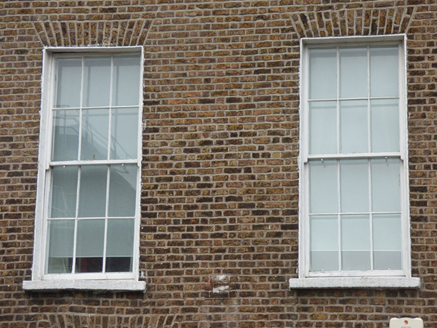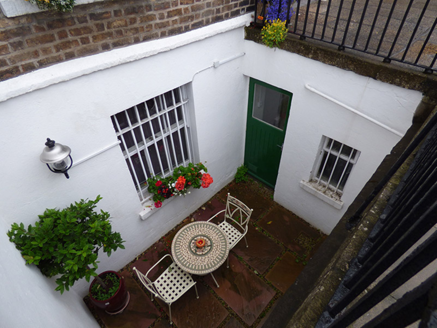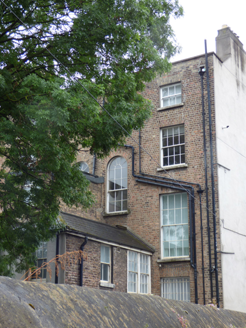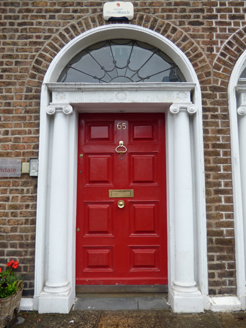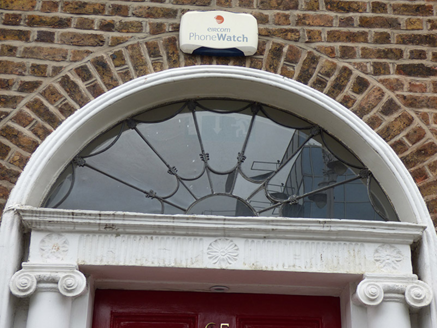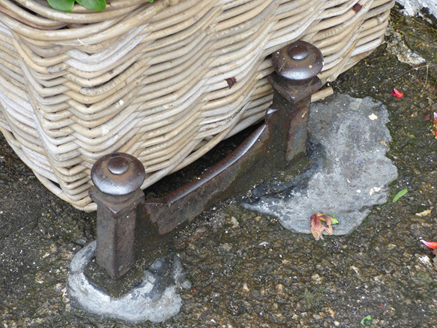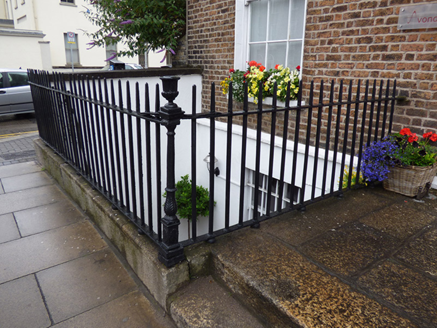Survey Data
Reg No
50100691
Rating
Regional
Categories of Special Interest
Architectural, Artistic
Original Use
House
In Use As
Office
Date
1820 - 1830
Coordinates
316887, 233056
Date Recorded
28/07/2016
Date Updated
--/--/--
Description
Corner-sited two-bay four-storey former house over basement, built c. 1825 as one of pair (Nos. 65-66), with three-storey return to east end of rear. Now in use as recording studio with offices. M-profile roof, hipped to east end, concealed by parapet with parapet gutters and replacement granite coping; gabled dormer window to south pitch of rear, and artificial hipped slate roof to return. Two rendered shouldered chimneystacks to north gable with varied clay pots. Cast-iron downpipe to rear. Flemish bond brown brick walling to upper floors on masonry plinth course over smooth rendered basement walling; rendered walling to north side elevation; and Dutch bond brick to rear. Square-headed window openings, diminishing in height to upper floors, with rendered painted reveals and painted masonry sills. Timber sliding sash windows with convex horns, three-over-three pane to top floor and basement, latter with wrought-iron grille, and six-over-six pane to ground, first and second floors; rear has three-over-three pane to top floor, eight-over-eight pane to second floor, and round-headed six-over-six pane to east bay. Round-headed doorway with moulded reveals, engaged Ionic columns, cornice and fluted frieze with rosettes, leaded cobweb fanlight, and eight-panel timber door with largely recent brass furniture. Shared granite entrance platform with cast-iron boot-scrape and two steps to street. Basement area enclosed by wrought-iron railings with decorative cast-iron posts on moulded granite plinth. Plainly detailed recent timber door and fixed timber window beneath entrance platform; segmental-headed opening beneath entrance platform. Coursed rubble stone boundary wall to northwest. Yard and recent flat-roofed mews buildings to rear.
Appraisal
No. 65 Baggot Street Lower is an early nineteenth-century house, forming a pair with No. 66 and part of a row of nine. Located on a prominent corner site, it is characterized by well-balanced proportions, a good neo-Classical doorcase and intact street-front setting features. Although it has incurred some loss of historic fabric, the overall character is retained and the building contributes significantly to the architectural heritage of the street and to the wider Georgian core of south Dublin. Planned in the late 1780s, development of Baggot Street began towards the west end, but progress was hampered by recession in the 1790s and the majority of buildings were constructed in the early nineteenth century, with some gaps remaining until the mid-1840s. The variations in levels, materials, doorcase treatment and detailing across the streetscape, highlight the speculative nature of its development.
